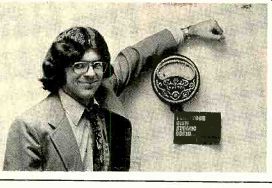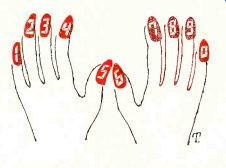
Digital
The 58th Convention of the Audio Engineering Society took place in New York November 4 through 7, giving members a chance to look over product displays and listen to some of the seventy-six technical papers presented. The key word at the event was "digital." Several manufacturers showed digital recording/reproduction devices, and many staged impressive demonstrations of the technical superiority of digital over conventional analog recording techniques.
Minnesota Mining and Manufacturing (better known as 3M) introduced a fully equipped thirty-two-channel digital studio recorder with impressive specifications-and a suitably large price tag of $150,000 (a four-channel mixdown deck is included in the bargain). By its nature, this machine has no (!) wow and flutter or print-through problems, and vanishingly small distortion. The signal-to-noise ratio is greater than 90 dB without any ancillary noise-reduction equipment.
Soundstream, Inc., of Salt Lake City has been developing various digital signal-processing devices for some years. At the convention they displayed a digital studio tape recorder and presented a paper detailing a strategy for digital editing of master tapes. Digital editing procedures have the potential to greatly simplify master-tape editing and re duce error in the process. For example, the tape splicing customary with analog recordings, involving physical cutting and patching, is no longer necessary. Several "takes" of a recorded passage can all be stored on one tape (or magnetic disc), and the final take can simply be inserted into the master by copying from one machine to the other. With digital master tapes, practically unlimited numbers of copies (and copies of copies) can be made with no deterioration in signal quality (in particular, the noise level remains unchanged even after many generations).

Some of the digital recorders seen at the show have been around for a while even in consumer versions. Videotape technology is well suited to digital applications, and some manufacturers (such as Sony and Mitsubishi) have adapted their video machines to audio recording. Sony has a consumer digital encoder/decoder that can be used with its Betamax videotape unit, and Mitsubishi was showing three pulse-code modulation (PCM) devices: an open-reel deck, a cassette deck (using the U-matic video-cassette format), and a new disc system developed in cooperation with Teac and Tokyo Denka. Although they staged a startling demonstration of the cassette recorder (a recording of a jet plane taking off, made without compression or peak-limiting, showed the system's vast dynamic range), the real star of the exhibit was the disc recording and playback system.
The PCM disc-recording system uses a metal-plated transparent disc which stores a record of a PCM signal in the form of a series of "pits" on the disc surface. In the process of making a recording, the audio signal is pulse-code modulated upon the disc by effectively "burning in" the pits with a laser beam. Playback is accomplished optically by "reading" the pits with another (lower-intensity) laser beam. The master disc is used to make polyvinyl-chloride copies in a process similar to that of standard record pressing. The disc, which measures about 12 inches in diameter, rotates at 1,800 rpm (you thought 78 rpm was fast?). For now, recordings are made on one side of the disc only; playing time is about thirty minutes per side.
Practically all the digital devices shown or described in papers at the show were professional units for recording studios. The cassette and disc, however, are intended for the consumer market. The disc player is projected to cost about $600 to $700 (perhaps less later) and individual discs might ultimately cost no more than ordinary LP's. Mitsubishi has a number of other ideas for the disc system, among them jukebox applications. They envision putting on one disc a large number of three-minute singles, which will be appropriately "addressed" (in other words, the positions of individual selections on the disc will be numerically encoded) so they can be located by computer circuits when the customer plunks his change into the machine and keys in his choice.
It is clear, from the audiophile's point of view, that a big limitation on these new systems right now is the lack of software; there are no prerecorded programs as yet. Nonetheless, one thing is certain: audio is going digital, and it's only a matter of time before a digital hi-fi system finds its way into American homes.
Acoustic Profile
As many audiophiles realize, the last (and often most frustrating) problem they encounter in getting their hi-fi systems to sound "right" is that of determining and correcting the acoustic quirks of their listening rooms.
But help is on the way. If you just happen to find yourself at one of Acoustic Research's show exhibits, you may get to see an approximate frequency-response graph of your listening room or a plot showing where standing waves are likely to form. AR has transferred from their large research computer to a portable minicomputer scaled-down versions of some of the acoustics programs they have been producing. They are taking these "on the road" to various hi-fi shows and AR dealers who offer consumer seminars. The standing-wave program requires only the room dimensions as input data; the computer displays the predicted standing-wave pattern on a television-like CRT screen. The "Mini" is also programmed to display approximate polar response graphs for high-frequency drivers, and it needs only the driver's diameter to do this.
Cheaper Power?
There may be a change coming in the economics of higher-power-amplifier manufacturing. National Semiconductor, one of the largest manufacturers and suppliers of integrated circuits (IC's) in the United States, has announced a new audio power-driver IC, the LM391, said to be suitable for application in audio power amplifiers. According to Nation al, the chip can be incorporated into designs to drive external power transistors to an out put of up to 140 watts when two of them are bridged. It is now being promoted for designs ranging from about 40 to 75 watts output.
The most interesting aspect of the LM391 chip is that it can replace as much as $15 worth of discrete-component circuitry at a cost of about $1. Among other design features, the chip has protective circuits built into it, and this can also represent a saving in external circuit components (many manufacturers arrive at their retail price by multiplying their parts cost by a factor of five).
For now, however, it appears that power amplifier designers are not particularly concerned with the least expensive way of doing anything. The search is on for proprietary circuits whose real-or imagined-advantages will permit each manufacturer to claim performance superior to that of his competitors.
A "standard" driver stage would for that reason be anathema to designers looking for esoteric solutions to old problems or inventing new problems that demand novel and expensive solutions.
Also see:
TECHNICAL TALK: Fuse Distortion? by JULIAN D. HIRSCH
Source: Stereo Review (USA magazine)